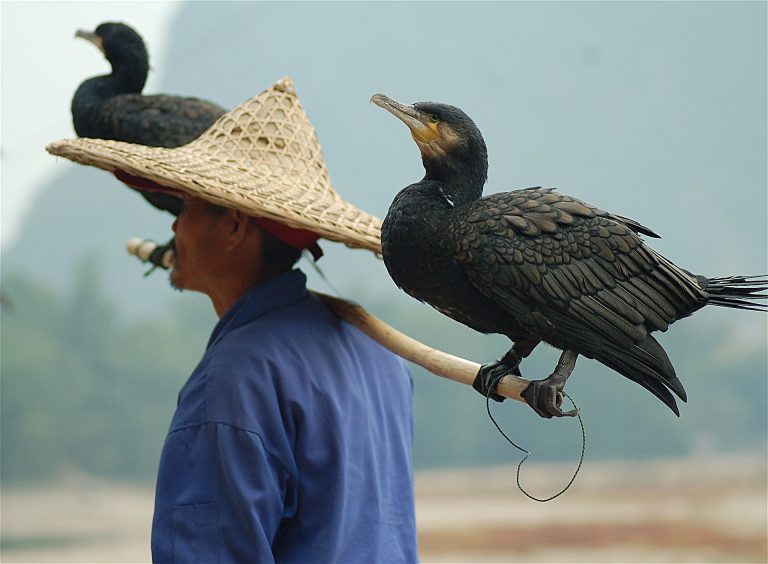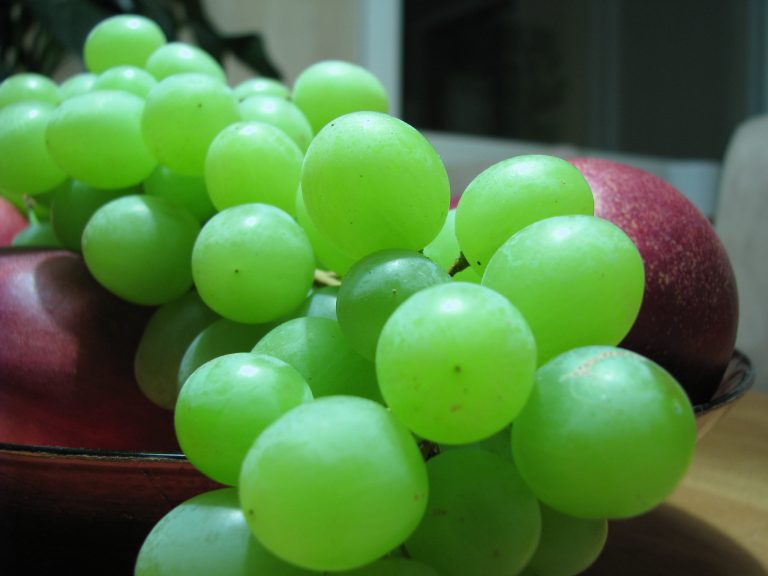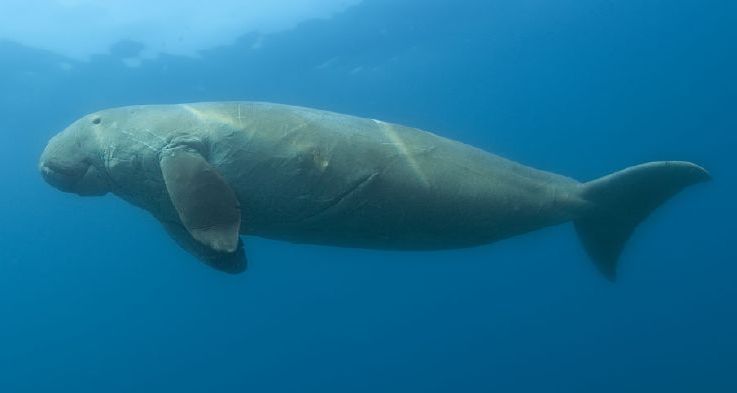As gardens across America go dormant for the winter, many of our feathered friends have made their annual journey south. This includes the fascinating — and myth inspiring — hummingbirds.
In both North and South America, indigenous cultures are rich with hummingbird folklore. These undersized avians are credited with many important contributions to mankind, including the introduction of medicinal tobacco, gaining the blessing of rainwater from the gods, and the art of basket weaving. Hummingbirds are often seen as messengers from Heaven, and are associated with beauty, endurance, peace and wisdom.
Named for the sound of their rapidly beating wings as they dart from flower to flower like pollinating insects, hummingbirds are among the most delightful, albeit fleeting, visitors. When food gets scarce, their wee little wings can carry them thousands of miles one-way in migration. They must stop frequently to fuel up, and many first-time travelers will perish.
Learning a little something about hummingbirds can enable us to help them on their difficult journey.
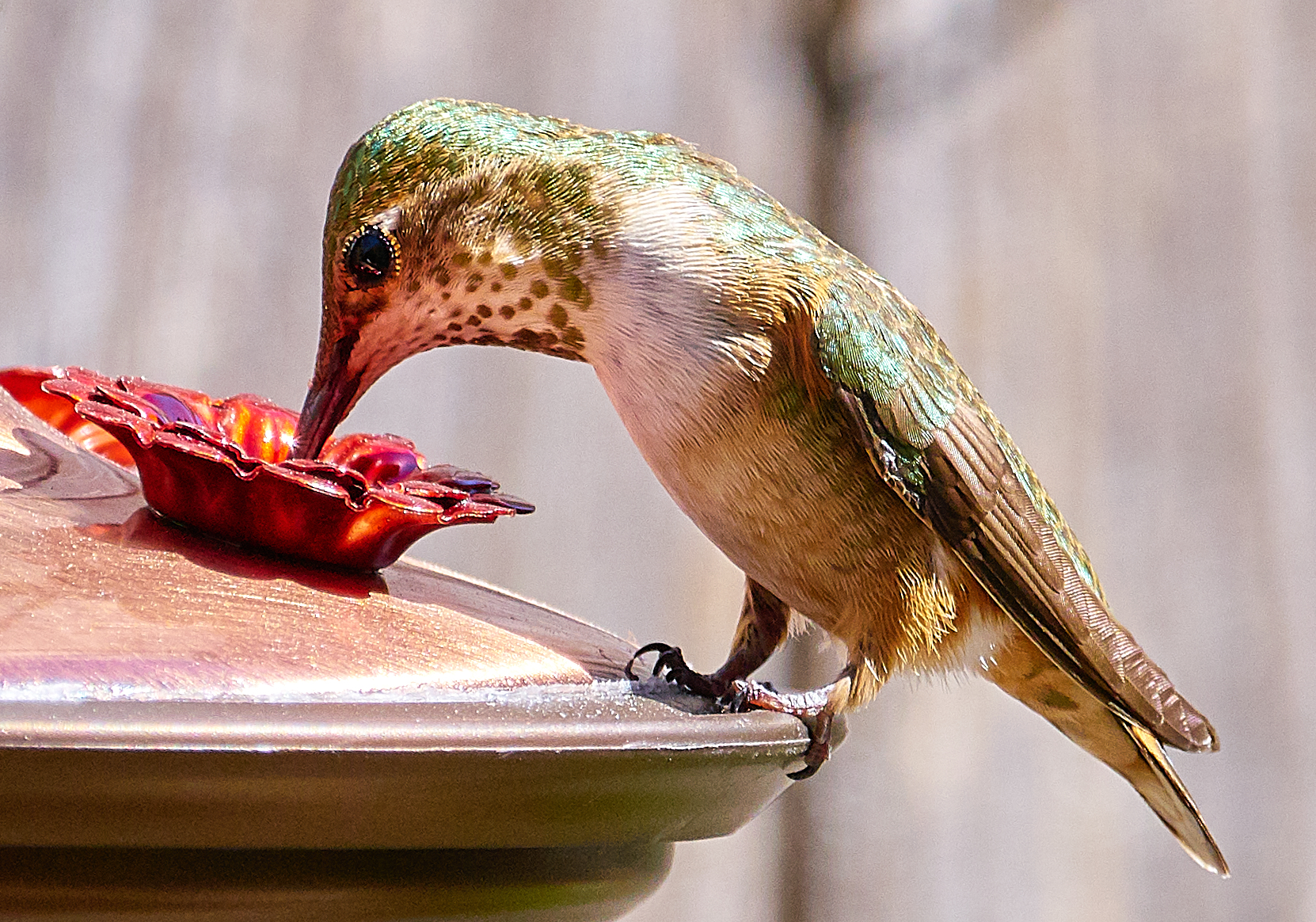
Little bird, big appetite
Hummingbirds belong to the family Trochilidae, which includes over 320 species — all restricted to the western hemisphere. They are easily recognized by their long, thin beaks, specialized for feeding on nectar, and most species are much smaller than your average bird.
Success
You are now signed up for our newsletter
Success
Check your email to complete sign up
The tiniest is the bee hummingbird, measuring only around 2.25 inches in length (including its long beak) with a weight equivalent to the American dime! The bee hummingbird has a relatively long life span of seven years in the wild. It is found only in Cuba and, like most tropical-dwelling hummingbirds, does not migrate.
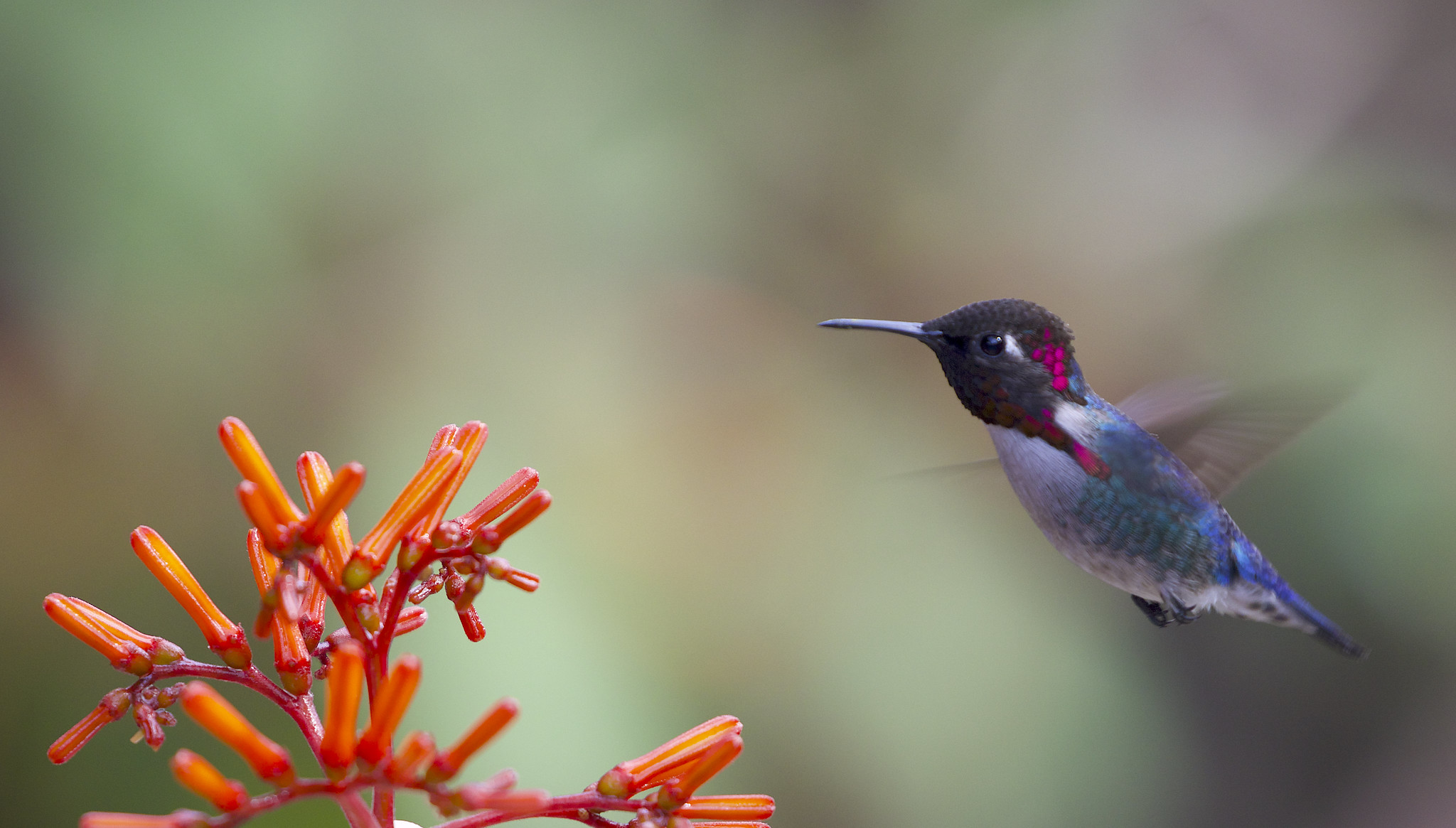
Migrating species’ life spans average only three to five years, due to the fact that most birds will die in their first year. Once they make it through an annual cycle, however, they might live up to seven or eight years.
Hummingbirds are fast flyers, with recorded speeds of up to 30 miles per hour (mph) in direct flight, shooting up to 50 mph or more during their courtship dives. As you might imagine, their little hearts are racing as well. Depending on the species, they could beat more than 1,200 times per minute when in flight, with their wings beating about 70 times per second.
Due to their high metabolism, hummingbirds have to eat frequently, consuming half their body weight in bugs and nectar every day. Normally, they feed every 10 to 15 minutes, visiting countless flowers and catching small insects. While many assume that hummingbirds use their beaks like a straw, they actually lap up nectar with their tongues, sticking them out and pulling them back several times per second.
Migrating hummingbirds
While most hummingbirds live year-round in tropical regions, some hummingbirds migrate between North and Central America. Different species travel at different times, and to different locations. Patterns in the weather, food sources and precipitation can trigger their migration.
Before they take off, they try to consume enough food to double their weight and store up energy for the long flight ahead. Knowing your local species and when they migrate will help you determine when to keep your feeders clean and full.
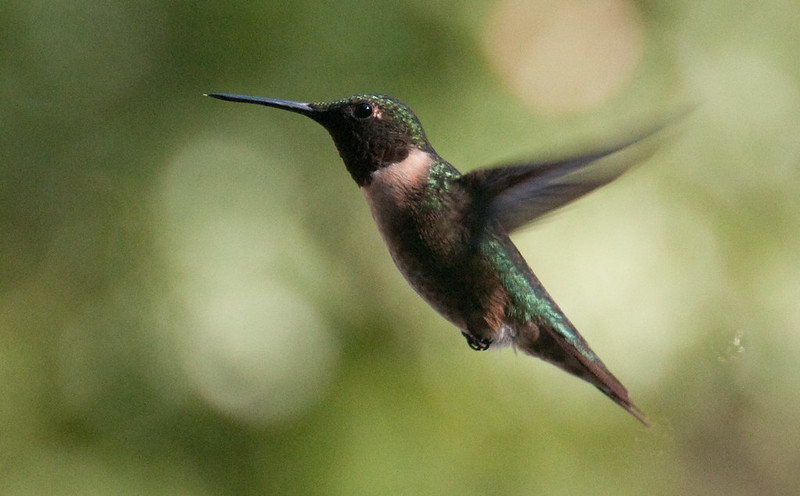
The ruby-throated hummingbird, found throughout the eastern U.S. and southeastern Canada, travels 2,000 miles to Central America each fall. The journey takes months — with a departure in July or August and arrival in Costa Rica around October or November.
Over land, they travel an average of 25 miles a day, and remain at low altitudes so they can spot good places to fuel up. These fearless flyers will traverse the whole Gulf of Mexico in one night; an astounding 500 miles! Then they turn back around each spring and do the trip in reverse.
The rufous hummingbird travels from southern Alaska to southwestern Mexico — about 4,000 miles one way. This trip takes up to eight weeks, with a departure around the first week in July and arrival in early September. The birds take breaks to feed and rest, and will appreciate fresh nectar from your garden if you are on their route. They head back north in early March.
The calliope hummingbird breeds in the northwestern region of North America, including the Canadian Rockies. It is our smallest hummingbird, measuring only three inches in length, yet it travels all the way to Southern Mexico starting in early July.
No matter which species, hummingbirds are usually solitary flyers, coming together with other birds just because they are taking the same trip. Males tend to reach their destinations before the females, so they can prepare for their courtship rituals.
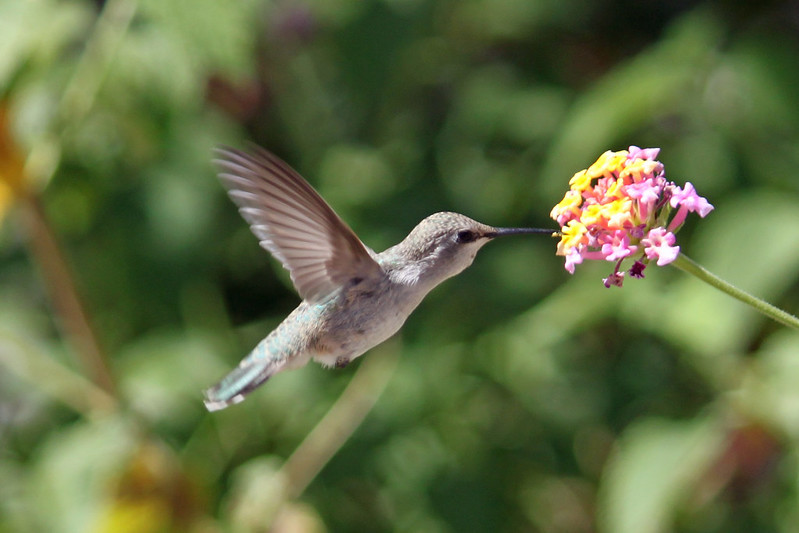
Feeding hummingbirds
From March through early September, hummingbirds can be sighted all across America. To get a more exact timeframe for your area, check a hummingbird migration map. This way you can be prepared to accommodate your little guests.
Hummingbird feeders are a popular way to attract these tiny travelers, but what you put in them makes a difference.
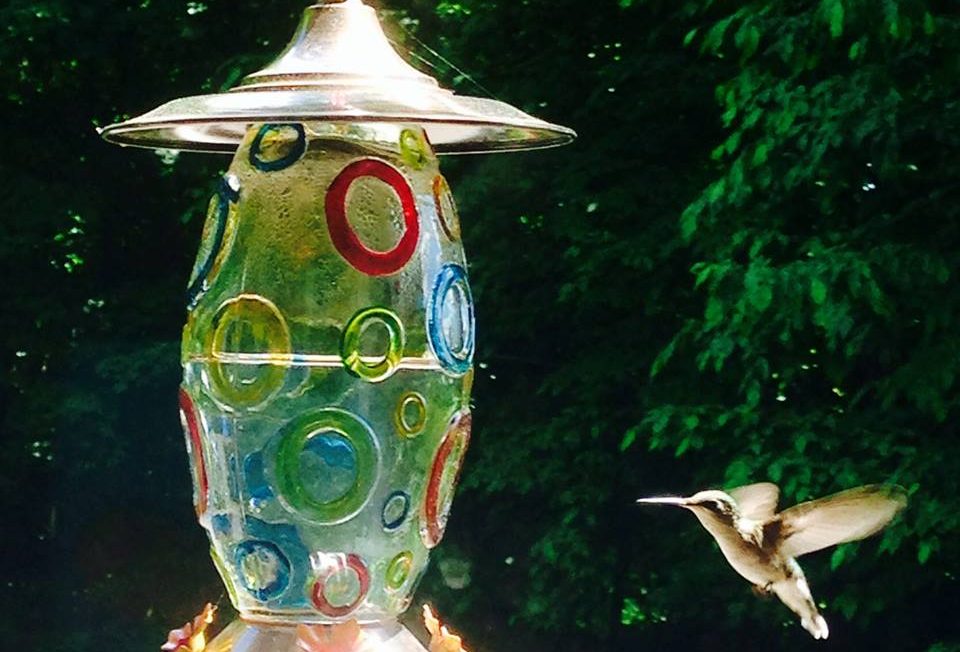
Home-made nectar
Although sugar water is commonly recommended for feeding hummingbirds, conventional sugar is mostly made from GMO sugar beets or sugar cane sprayed with Roundup, a chemical weed killer made with the probable carcinogen glyphosate. I hate to see my teenage children consuming conventional sugar, and shutter to think what this compromised sweetener does to tiny creatures when it is such a large part of their diet.
Fortunately, it is easy and economical to make your own nectar with natural and wholesome ingredients: Four parts non-chlorinated water (filtered, spring, or collected rain water) to one part organic, white sugar. Avoid honey, brown sugar, molasses, stevia, and artificial sugars.
You don’t need to boil the water, or add artificial coloring. Simply mix a half cup of sugar with two cups of water until the sugar dissolves. Store any excess in the refrigerator for three to five days.
Choosing glass feeders over plastic is another way to help minimize hummingbirds’ exposure to harmful chemicals. Clean your feeders regularly with a cloth and warm water. Soap and bleach can leave residues that are hard to remove.
Natural nectar
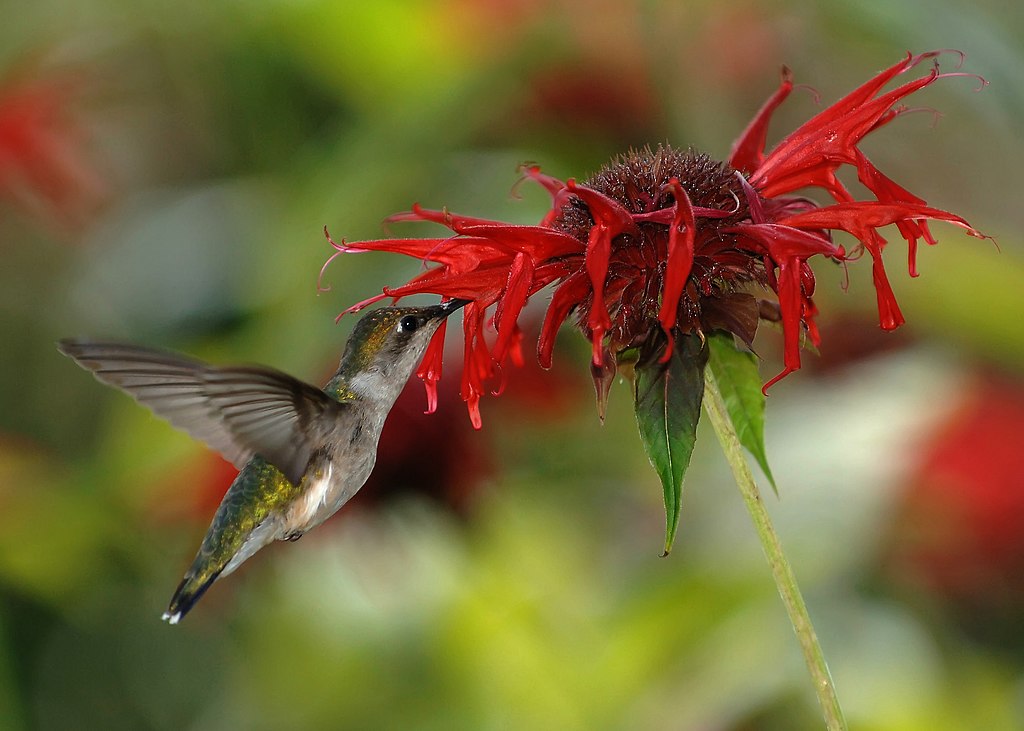
Better yet, fill your garden with beautiful flowers that will naturally feed the birds exactly what they need — including many small insects that flock towards flowers!
Some common perennials that will attract hummingbirds include:
Bee balm (Monarda didyma), bleeding hearts (Lamprocapnos spectabilis), butterfly bush (Buddleia davidii), cardinal flower (Lobelia cardinalis), columbine (Aquilegia canadensis), coral bells (Heuchera spp), Garden phlox (Phlox paniculata), lupine (Lupinus x hybridus), autumn sage (Salvia nemarosa or Salvia greggii),and trumpet creeper (Campsis radicans).
If your fall months are relatively mild, it is not yet too late to plant many perennials. Otherwise, you have the winter months to plan for an early spring planting.
Annuals plants like lantana, flowering tobacco (Nicotiana), spider flower (Cleome), nasturtiums, open-pollinated petunias and zinnias will also provide important food for hummingbirds. Plant annuals in the spring after all danger of frost. The more diverse your garden is, the longer you will be able to attract hummingbirds and help them fuel up on their long and arduous migration.
READ MORE:
- The Piercing Tale Uncovering the Mystery of Bird Migration
- Birds’ Abilities in Language Closer to Humans Than Any Other Animal – Even Primates
- Cormorant Fishing: A Millenary Tradition of Human-Wildlife Collaboration
Ila Bonczek contributed to this report.





